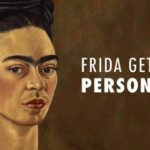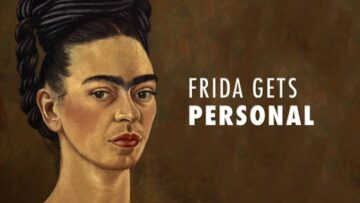

“Culture has come to prize this quality in creative work: the ability to grab people quickly,” and “above pretty much anything else” at that. So says Evan Puschak, who should know: as the Nerdwriter, he runs a popular eponymous channel on Youtube, where everything depends on getting and holding the viewer’s increasingly fleeting attention. Even under such pressures, Puschak has managed to maintain one of the most thoughtful cultural channels around, previously featured here on Open Culture for its video essays on everything from the films of Jean-Luc Godard to the paintings of Edward Hopper to the music of Fleetwood Mac.
But it is Frida Kahlo whom the Nerdwriter credits as a master manipulator of audience attention. “Yes, there’s a sensationalistic obsession with the drama of her life, but that wouldn’t arouse nearly as much interest if it weren’t for the drama of her art — which is also sensational, but in the good way.”
The sensationalistic quality of Kahlo’s paintings owes to the “intimacy of the images” they depict, especially when they communicate “her vulnerability, her physical and emotional pain, but also her defiance and self-confidence, and the pride she so clearly has in her culture.” This comes through with special clarity in the self-portraits she created quite prolifically, and in so doing defined herself as well as the new 20th-century Mexican culture with which she came of age.
“I really, really hesitate to bring up the word selfie,” says Puschak, but “insomuch as her self-portraits are always simultaneously a recording and a performance of identity, they’re bound to be relatable to modern audiences.” In the first half of the 20th century during which Kahlo lived, painting was a relatively efficient way to produce images of oneself. Today, many of us do it dozens of times a day, at the touch of a button, marshaling few artistic resources in the process. But if selfies lack the impact of Kahlo’s self-portraits, it may owe to the ironic reason that the selfies look too good. Kahlo’s painting “has a bit of an amateurish quality to it, in its flattening of depth and skewed perspectives and anatomy.” But she used that style on purpose, paying homage to the folk art of her homeland and also making you feel as if “someone you know” painted these works. Puschak, who refers to her on a first-name basis, seemingly feels that way; but then, he’s far from the only Frida fan to do so.
Related Content:
A Brief Animated Introduction to the Life and Work of Frida Kahlo
What the Iconic Painting The Two Fridas Actually Tells Us About Frida Kahlo
Take a Virtual Tour of Frida Kahlo’s Blue House Free Online
Based in Seoul, Colin Marshall writes and broadcasts on cities, language, and culture. His projects include the Substack newsletter Books on Cities, the book The Stateless City: a Walk through 21st-Century Los Angeles and the video series The City in Cinema. Follow him on Twitter at @colinmarshall or on Facebook.
The Intimacy of Frida Kahlo’s Self-Portraits: A Video Essay is a post from: Open Culture. Follow us on Facebook and Twitter, or get our Daily Email. And don't miss our big collections of Free Online Courses, Free Online Movies, Free eBooks, Free Audio Books, Free Foreign Language Lessons, and MOOCs.
from Open Culture https://ift.tt/3AHOQGS
via Ilumina

Comments
Post a Comment